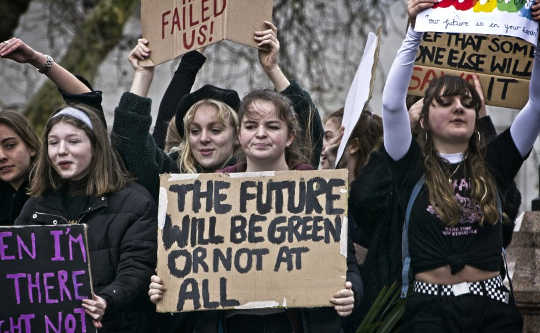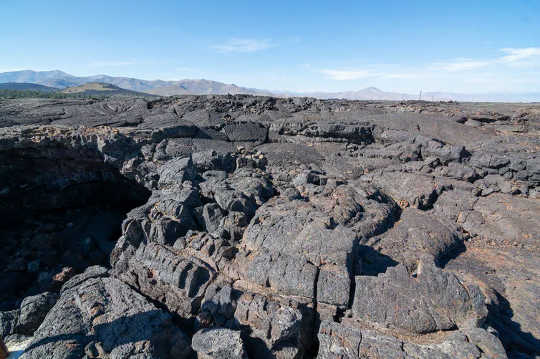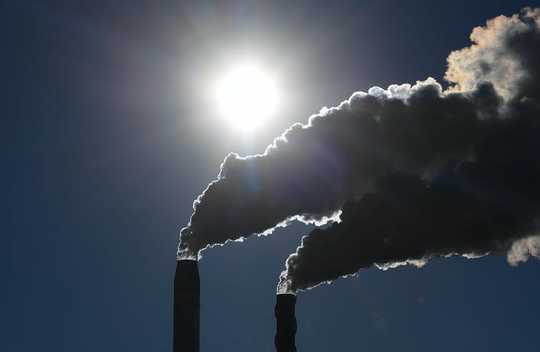
Hundreds of companies, including major emitters like United Airlines, BP and Shell, have pledged to reduce their impact on climate change and reach net-zero carbon emissions by 2050.

Almost everyone agrees that policies tackling inequality have to be at the core of a sustainable post-pandemic recovery.

Marine ecosystems are under threat from deep-sea mining projects, oil rigs and offshore windfarms. When these facilities are built and maintained, they tend to damage the rich ecological networks around them.

Population growth plays a role in environmental damage and climate change. But addressing climate change through either reducing or reversing growth in population raises difficult moral questions that most people would prefer to avoid having to answer.
- By Rachel Kyte

How the U.S. manages the economic recovery from COVID-19, the financial risks from climate change and inequality together will determine the chances of American prosperity over the coming decades.

Australia doesn’t currently export renewable energy. But an ambitious new solar project is poised to change that. The proposed Sun Cable project envisions a ten gigawatt capacity solar farm...

With a recession looming, it’s time to come up with a good recovery plan. There is no point in simply reinventing an outdated economic model, and recent research by economists and health experts has underlined how instead a “green recovery” could benefit not just the climate but also human health and prosperity.

The idea of a green recovery from the COVID-19 pandemic is gaining traction around the world. The UK recently pledged to invest £350 million to cut emissions from heavy industry.

The onus to live sustainably has never been greater. It drives everyday actions from making sure we recycle our rubbish to carrying reusable cups and bottles with us wherever we go.

During lockdown, travel restrictions caused car and public transport use to plummet across the UK. On April 12 2020, the number of daily trips by car fell to 22%, compared to a typical day the year before. Public transport use dropped too.

Why has Earth’s climate remained so stable over geological time? The answer just might rock you.

Even before the pandemic, the proportion of people working from home was slowly but steadily increasing. But COVID-19 has put the practice into hyper-drive.

If the world is to transition to a climate-compatible future, much will turn on new innovations in clean energy and whether they can be deployed at a large scale.
- By Sumedha Basu

For the last few decades, the consensus among leading economists has been that putting a price on carbon is the most efficient way to reduce emissions.
- By Warren Mabee

All over the world, architects and engineers are crafting cutting-edge skyscrapers from one of the most renewable and sustainable materials available to humanity — wood.
- By Tom Pugh

Forests are thought to be crucial in the fight against climate change – and with good reason. We’ve known for a long time that the extra CO? humans are putting in the atmosphere makes ...

The Intergovernmental Panel on Climate Change says negative emissions technologies will be needed to meet the Paris Agreement goal of limiting warming to well below 2?. In other words, just cutting emissions is not enough – we must also take existing greenhouse gases from the air.

Seven millennia since its invention, leather remains one of the most durable and versatile natural materials. However, some consumers question the ethical ramifications and environmental sustainability of wearing products sourced from animals.
- By Sam Stranks

The demand for cheaper, greener electricity means that the energy landscape is changing faster than at any other point in history.

If you’ve driven through an area where companies extract oil and gas from shale formations, you’ve probably seen flames dancing at the tops of vertical pipes.

Since 2010, wind energy has seen sustained growth worldwide, with the amount of energy generated by offshore wind increasing by nearly 30% each year.

















